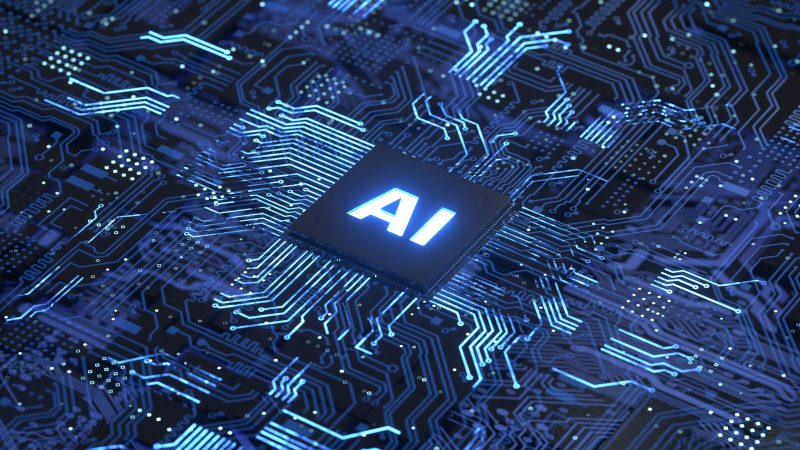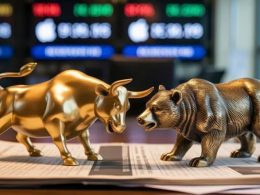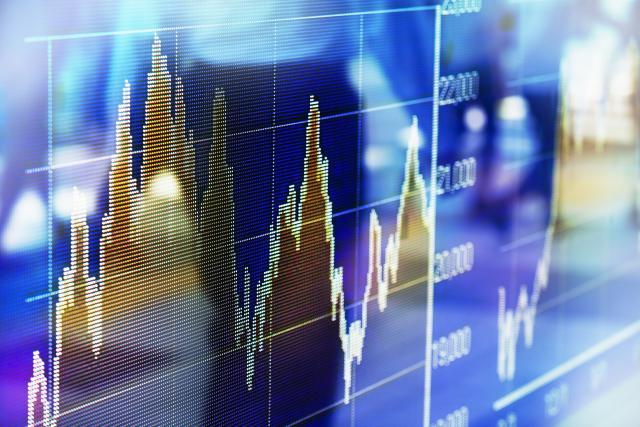by Hubert Marleau, Market Economist, Palos Management
June 13, 2025
Seemingly, there is now consensus among foreign exchange dealers that the greenback is likely to depreciate meaningfully over the next few years. This, however, is based on the utterly paradoxical policy that reducing the trade deficits with tariffs on the one hand, while embracing government budget deficits with tax cuts on the other, will bring home factories that were lost mainly because of automation.
Modern factory jobs are high-tech, run by engineers and technicians. The IMF calls this trend “the natural outcome of successful economic development.” Indeed according to official projections by the Economic Policy Institute, the future is drifting away from factories, as high school graduates head en masse to non-capital-intensive jobs and skilled trades, such as installers, electricians, plumbers, carpenters, mechanics, HVAC technicians, health-care supporters, security workers, police officers, etc.
Indeed, a precipitous de-dollarisation process as the sole dominant reserve currency, could well happen if the US sticks stubbornly to its aforementioned contradictory policy,ignoring employment trends, failing to uphold global norms like reliable institutional pillars, and overriding rules-based policies in favour of radical trade and capital ones. Even a partial abandonment of the US dollar as a reserve currency would be internationally disastrous, because foreigners would no longer invest in low-yielding US assets like treasuries, which underpin its exorbitant privileges - a situation that has allowed foreigners to own $20 trillion more U.S. assets than Americans own abroad in turn, without the US incurring a negative net investment balance. Ironically, contrary to popular belief, wizardly Americans are getting a much larger return on their foreign investments than the rest of the world does on theirs. Put simply, the U.S. invests in foreign business assets, while the rest of the world invests in US government bonds. Unfortunately, however, international investors and official entities who manage reserves are casting a wary eye at US Treasuries, even though yields are considerably higher than on their own government bonds, 10-year Treasury yields (4.50%) being 135 bps higher than GDP-weighted World 10-year bond yield (3.15%).
While this does suggest a possible, if not gruelling, decline in the use of the dollar as a world currency reserve, not so fast: it is far from a certain outcome.
- First, manufacturing output has not collapsed. Far it. Factory output is over twice as high as it was in the 1980s, and produces more goods than Japan, Germany and South Korea combined.
- Second, Harvard University published an index in The Economist that ranks 25 countries across 5 sectors: artificial intelligence, semiconductors, biotechnology, space and quantum technology, in which the U.S. dominates all 5 rankings.
- Third, of all these sectors, the most important by far is artificial intelligence (AI), where the new arms race lies- an area where the US excels by a mile. The advancement in Generative AI (text, images, video, code, tools,etc.), which focuses on content creation; in Agentic AI (digital employees that take actions, adapt to feedback, and coordinate tasks), which introduces autonomy in digital spaces; and Physical AI, which brings intelligence into the real and material world (robots, vehicles, drones and such). This is the one sector, and real reason, why American companies have a genuine shot at overcoming industrial weakness.
AI manufacturing is redesigning the typical factory like electricity did in replacing steam power 100 years ago. The US is exploiting the capabilities of this aggressively to strategize better production processes, identify defects, and make adjustments, all in real time. Fortunately, it has the scientific superiority in fields of microgravity, nanotechnology and orbital fabrication, combined with the technological strengths to power this through its dominance of data centres, as well as clear superiority of semiconductor designs; the upper hand in venture capital; and preeminence in R&D. Indeed, advancement in AI is so uneven between nations that it is bound to boost US productivity above them by default, particularly in areas where it is sorely needed.
This sector is so attractive that fixed capital formation per capita has grown more than 80% since 2010 and is rising fast. With the promise of eye-watering real returns increasingly visual to the rest of the world, faith in the country will be maintained and, consequently, exorbitant privilege. In this regard, foreigners are not likely to recklessly forsake their dollar assets, thereby avoiding the possibility of intense selling pressure under the Trump regime.
To Open AI chief Sam Altman, that point of singularity may have already passed. As he points out: “Right now, writing computer code will never be the same. Next year will see the arrival of systems that can arrive at novel insights, and 2027 may see the arrival of robots that can complete tasks in the real world. By 2030, intelligence and energy - ideas, and the ability to make ideas happen - are going to become wildly abundant.”
So What Went On Last Week, Ended June13?
On Monday, top US and Chinese officials met for high-level talks aimed at ironing out trade disputes with rare earths, nuclear equipment, and chips being the main flash points. There was hope that an agreement resembling the one struck in Geneva would lead to a comprehensive arrangement. Meanwhile, the upward march of higher stock prices continued as consumer inflation expectations fell in May, for the first time this year by 0.4% to 3.2%, according to the
NY Fed; and the Atlanta Fed’s GDPNow model estimate for real GDP in Q2 of 2025 remained at 3.8%. The S&P 500 marched up slowly to 6006.
On Tuesday, China and the U.S. held the second of their trade talks, amid possibilities that the Chinese might not have as much leverage as is commonly given to them, Trump’s trade war having already exacerbated China’s deflation and shrunk its exports to the US. Trade with the latter has in fact collapsed: exports fell 15% in April and plunged in May by almost 35%, which is causing a lot of pain for Chinese exporters, deflating producer prices by as much as 3.3% in May alone. The customary attribute that China is like a marathon runner who doesn’t bother to look at any competitors, but just focuses on running further ahead, might not apply in this unusual case. Indeed, with stock traders thinking optimistically that the US has better bargaining chips, and with reports that talks are going really well, the S&P 500 edged up again 0.6% to end the day at 6039.
On Wednesday, as traders were anticipating that high-level trade talks would lead to a framework acceptable to both Trump and Xi to implement the Geneva consensus, in which the U.S. and China had originally agreed to a 90-day pause against each other’s imports, 48 hours of talks merely reaffirmed their earlier agreement: no substance, no breakthrough, and no durable resolution, with a deal still to come, if we’re lucky, on August 10th. Trump was quick to broadcast that he’d landed another trade win - a 55% tariff rate on China, versus 10% on the U.S. The news did not sway stock futures, however, upon deeper inspection, as details emerged, the S&P 500 turned sour, losing 0.3% to end at 6022. Unexpectedly, too, data from the BLS showed that both head and core inflation had only inched up 0.1% respectively, with limited effects from tariffs, while Reuters says that US importers are demanding lower prices to cover such tariffs.
In this connection, the bond market’s perceptions about future inflation in one year’s time have improved dramatically, falling from 4.1% to 2.7% in the space of 2 months. The current year-over-year increase in the CPI is 2.4%, leaving 0.3% for the tariff impacts. The majority of economists had predicted that US inflation would reignite, instead, inflation has come in lower than expected. Why? Because inflation is a monetary phenomenon: the money supply is only 4.0% y/y and interest rates across the board are higher than the going rate of inflation. Money spent on tariffs leaves less money for other things.
On Thursday, there was more proof that Americans have yet to feel any sting of inflation from the Trump tariffs, with no indications that profit margins are compressing. The producer price index rose a scant 0.1% in May and so did so-called core wholesale prices, which omit food and energy costs. Accordingly, the S&P 500 shrugged off earlier losses to post another modest gain of 0.4%, reaching 6045: 1.1% less than the all-time high of 6114.
On Friday, rising tension in the Middle East pushed Israel to attack Iran, targeting missile and nuclear facilities, as a result of which crude prices surged more than 10%, despite the oil glut, and gold prices rose more than 1.5% despite being overbought. Interestingly, 9-month future oil contracts were $7.50 less than the spot price ($73.50), suggesting the probable temporary nature of the conflict. Really? Then why did the US move US personnel out of the Middle East if not too dangerous a place? Iran promised retaliation against Israel and the USA, but also the Strait of Hormuz - the last crucial waterway for global oil supplies, which could comprise shipments from Saudi Arabia, Iraq and Qatar. As a result, S&P 500 tumbled 1.1% to 5977.
The Near-Term Stock Market Outlook
Last week I wrote: “Rumours have it that the negotiators in the Administration want to get the tariff issue behind them and out of the headlines. Thus there is anticipation that many trade deals will be signed soon, hopefully in a relatively transparent, fair and justifiable manner. Should this be the case, some normalcy will return to the market, meaning that conjecturing will be determined more by harder economic variables. Yes, we might bet on some stagflation over the short term. First, the strength of the labour market is fading as employment growth has slowed. Initial jobless claims have increased, job cuts have risen, job openings have slowed, and workers are not quitting their jobs. Second, tariffs have started to push up prices. However, these broad economic conditions are not expected to last for more than a quarter or two. Firstly, inflation expectations are now just tariff expectations, suggesting that the inflation boost could be temporary. Secondly, the lower exchange value of the dollar, the reduced cost of capital, the forthcoming easing of the monetary stance, the current run up in the money supply, the fast adoption of AI across many industries, and the expected decrease in taxes, are all ingredients that are likely to keep the economy resilient. In this connection, I think that there is a 75% subjective chance the S&P 500 will reach 6600 by June 2026 versus only 25%, for a fall to 5500.”
Several momentum stocks are showing signs of exhaustion, which could bring about pullbacks and choppiness, making the near-term summer outlook uncomfortable, given the warlike situation in the Middle East. However, the broad index appears to be in a strong primary uptrend, suggesting that dips could lead to buyable opportunities. The team at Citigroup has also turned bullish last week, pushing its S&P 500 target to 6300 by the end of 2025.
Copyright © Palos Management
















